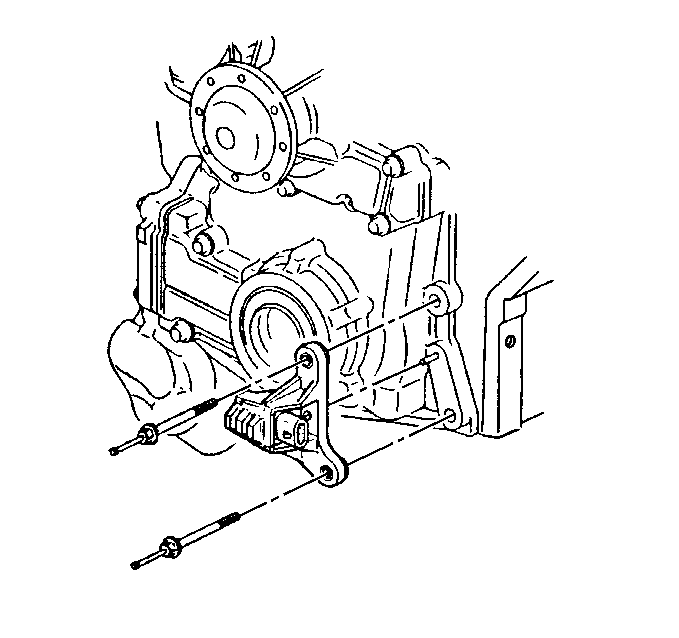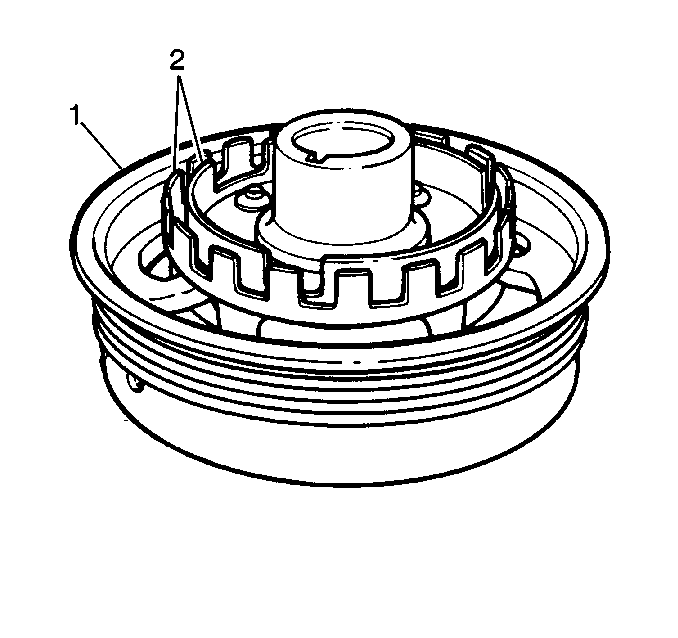Each interrupter ring has blades and
windows that either block the magnetic field or allow it to close one of
the Hall effect switches. The outer Hall effect switch produces a signal
called the CKP 18X because the outer interrupter ring has 18 evenly spaced
blades and windows. The CKP 18X portion of the crankshaft position sensor
produces 18 ON - OFF pulses per crankshaft revolution. The Hall-effect switch
closest to the crankshaft, the CKP Sync portion of the sensor, produces a
signal that approximates the inside interrupter ring. The inside interrupter
ring has 3 unevenly spaced blades and windows of different widths. The CKP
Sync portion of the crankshaft position sensor produces 3 different length
ON - OFF pulses per crankshaft revolution. When a CKP Sync interrupter ring
window is between the magnet and inner switch, the magnetic field will cause
the CKP Sync Hall effect switch to ground the CKP Sync signal voltage supplied
from the ignition control module. The CKP 18X interrupter ring and Hall-effect
switch react similarly. The ignition control module interprets the CKP 18X
and CKP Sync ON - OFF signals as an indication of crankshaft position, and
the ignition control module must have both signals to fire the correct ignition
coil. The ignition control module determines crankshaft position for correct
ignition coil sequencing by counting how many CKP 18X signal transitions
occur, i.e.; ON - OFF or OFF - ON, during a CKP Sync pulse.
The camshaft position sensor is located on the timing cover behind the
water pump near the camshaft sprocket. As the camshaft sprocket turns, a magnet
in it activates the Hall effect switch in the camshaft position sensor. When
the Hall-effect switch is activated, it grounds the signal line to the ICM,
pulling the camshaft position sensor signal circuit s applied voltage low.
This is interpreted as a CMP Sensor signal. The CMP Sensor signal is created
as piston #1 is approximately 25 degrees after top dead center on the power
stroke.


